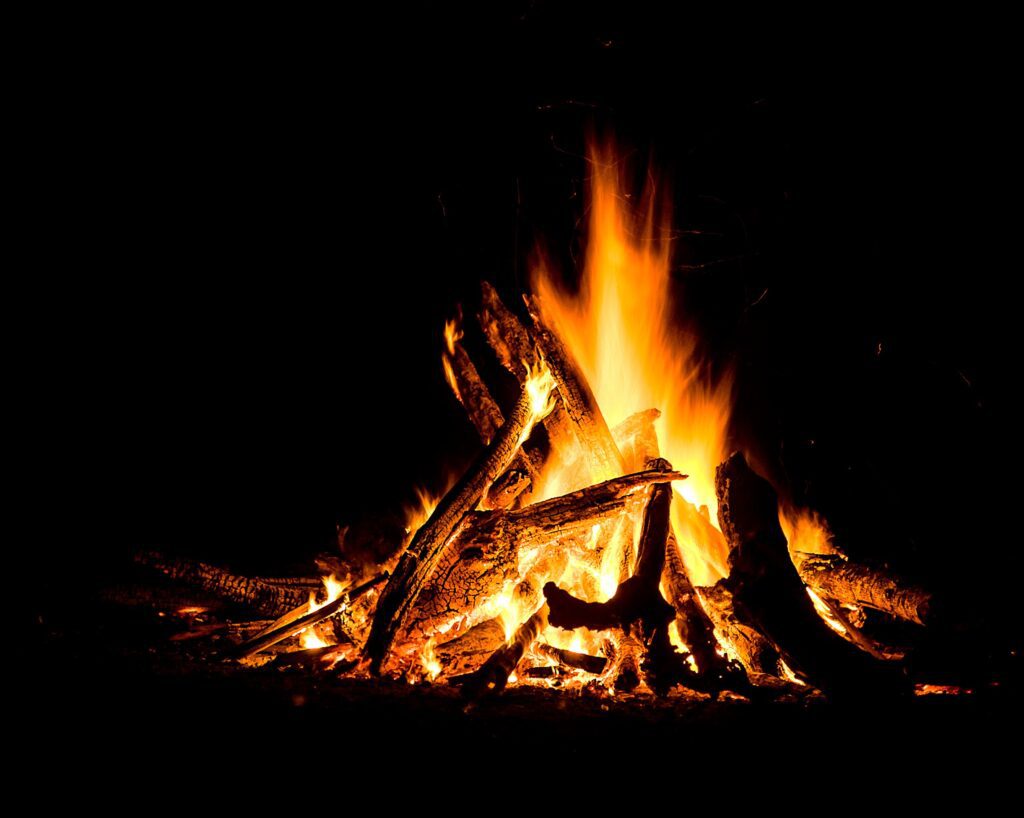June 14, 2023
Colorful Campfires
Campfire season is upon us and this time we are demonstrating a colorful science-infused trick to take bonfires to the next level.

We are fired up with another episode of Scorched Science!
Campfire season is upon us and this time we are demonstrating a colorful science-infused trick to take bonfires to the next level. In the content below the video, find information about chemical reactions with fire, important safety measures and steps for trying this at home.
Fire Facts
Long ago our ancestors discovered fire, which allowed us to advance as a species. There are three requirements for fire – fuel, oxygen and heat. We call this the fire triangle, and without it we wouldn’t be able to have backyard barbeques or roast marshmallows for our classic s’mores.
Different temperatures produce different colors of flames, and the base of the flame is the hottest point.
- Red: 1500 degrees Fahrenheit
- Orange: 2000 degrees Fahrenheit
- Yellow: 2200 degrees Fahrenheit
- White, Sparks: 2700 degrees Fahrenheit
- Blue: Up to 3000 degrees Fahrenheit
- Purple: Above 3000 degrees Fahrenheit
- Green: Green is not a “true” flame and temperature varies depending on the chemical added to the fire
Did you know that different chemicals can create different colored flames and special effects? In this activity, you’ll learn how to create wax fire pellets using materials you may already have at home.
Safety First
Before we get started, let’s go over safety, since this experiment involves both chemicals and fire.
When working with chemicals, you’ll want to wear goggles to protect your eyes and gloves to protect your fingers. We also recommend a long-sleeved shirt, pants, close-toed shoes and tying back long hair.
When working with fire, it is important to have fire-resistant clothing like a lab coat, fire-safe gloves and a face shield. As an extra precaution, have a fire blanket and fire extinguisher on hand.
Materials:
- Dixie cups
- A marker or pen
- Old candle wax (or a candle you don’t mind parting with)
- A lighter or blow torch
- A double boiler (we used a pot and a metal bowl)
- A metal spoon
- A Ziplock bag
- A stir stick (popsicle sticks work great!)
- Powdered coffee creamer
- Epsom salts
- Borax
- Table salt
- Tums or Rolaids (crushed up)
Directions:
- Write the name of the household chemical you’re going to put in each cup on the side of the cup, so you remember which is which.
- Crush up your Tums by putting them in a Ziplock bag and hitting them on a hard surface with a metal spoon.
- Pour a small amount of each chemical into its designated cup – about a teaspoon of each. Mixing different chemicals will not make a new color, so be sure to do them individually for the best results.
- Melt your wax in a double boiler. If you are doing this around the campfire and do not have a double boiler, you can use a blow torch or lighter to melt the wax directly into the cup. Be careful and wear your fire-safe gloves!
- Once your wax is melted, pour just enough wax in each cup to cover the chemicals.
- Use your stir stick to mix the wax and chemicals together thoroughly until there is no loose powder at the bottom of each cup. You may need to add a little more wax if there is still dry powder at the bottom. If you pour too much wax, you can always add a little more of each chemical until it’s the perfect consistency.
- Let the wax cool completely. While it’s still cooling, you can shape the wax however you want, just make sure it has cooled enough to where it’s safe to handle.
- Once your wax pellets have cooled completely, you can use them immediately or store them in a cool, dry place sealed in a Ziplock bag.
- When ready to use, toss them into the fire and make observations!
Here is a list of household chemicals and their expected flame:
- Powdered coffee creamer will create a deep blue flame with sparkly flashes due to the magnesium in it. Magnesium is a common element used in fireworks.
- Epsom salts (magnesium sulfate) will generate a white flame.
- Borax is a household cleaner that can generate orange and sometimes light green flames.
- Tums and Rolaids contain an abundance of calcium which can create a vibrant purple flame.
- Table salt turns flames a vibrant yellow.
We also tried:
- Copper sulfate, which created a bright green flame.
- Potassium carbonate, which generated a purple flame.
- Strontium chloride, which had a red flame.
Want more Scorched Science? Watch our previous episodes Flaming Alcohol Inks and Copper Flame Painting.